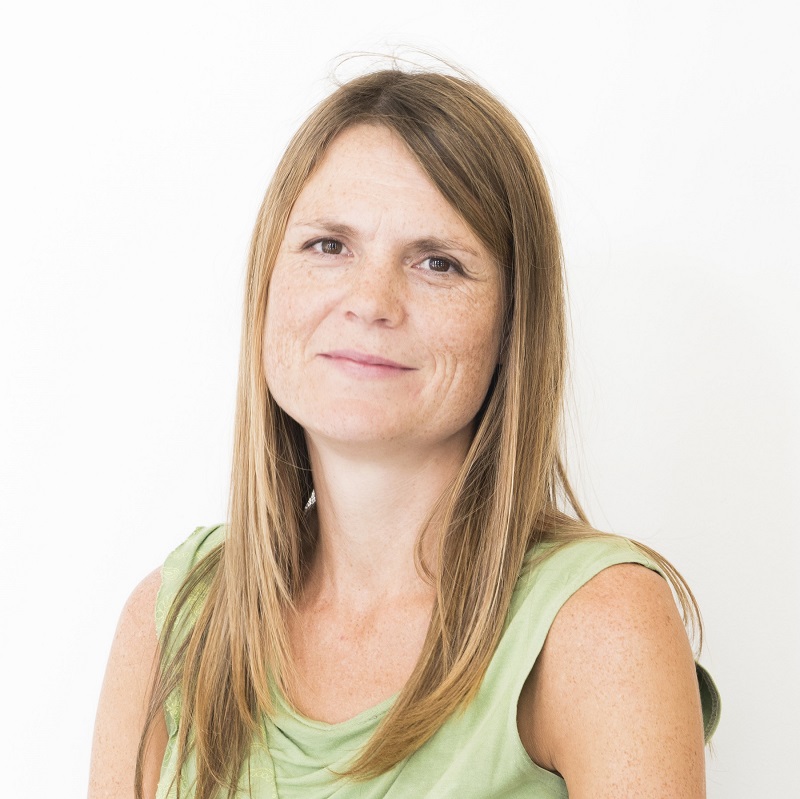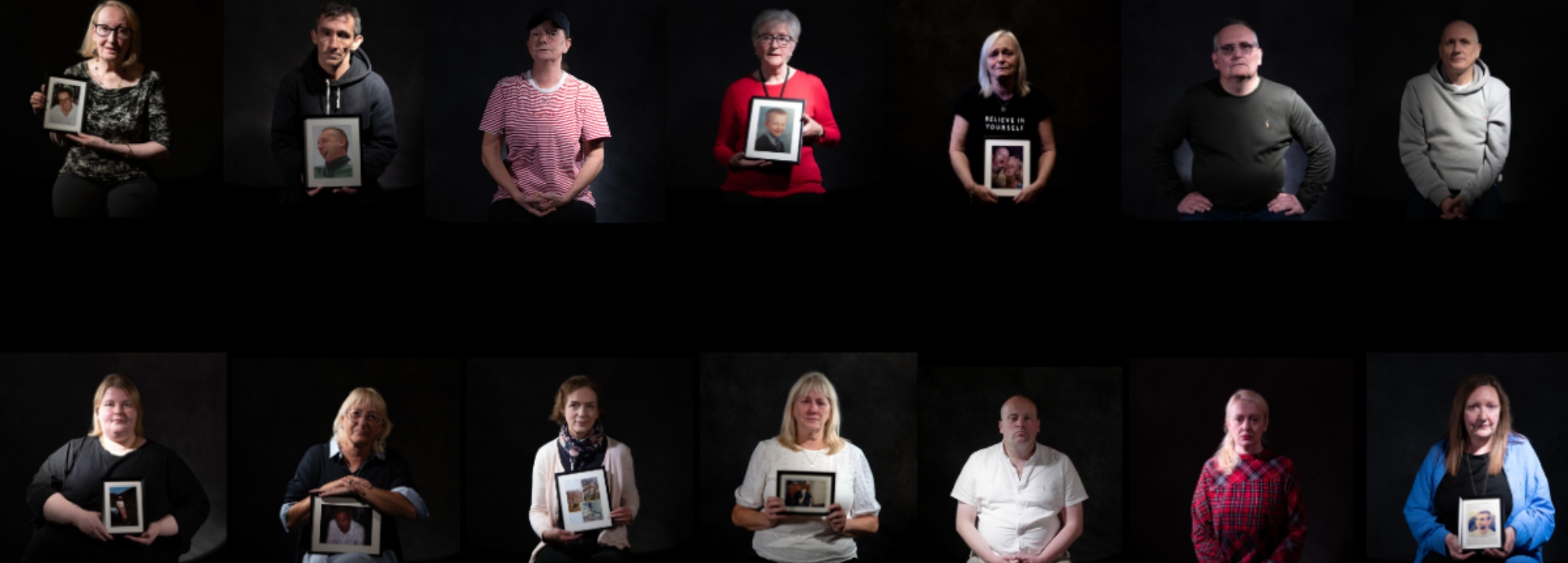‘Everyone knows someone’ is the message behind See Beyond - See the Lives - Scotland, a new campaign from academics and advocacy organisations that aims to reduce the stigma that surrounds deaths due to alcohol and drugs.
See Beyond – See the Lives - Scotland’s website shares hard-hitting stories and videos from family and friends, in the form of a letter to their loved one who has died. It also includes resources and advice for those harmed by substance use whether for themselves or a family member or friend.
The groups behind the campaign – the University of Stirling, Scottish Families Affected by Alcohol and Drugs, Scottish Health Action on Alcohol Problems (SHAAP), and The Salvation Army - say its messaging is deliberately stark and designed to “challenge and provoke”. They hope the stories and images will shatter myths surrounding drug and alcohol use and deaths and encourage the public to show compassion for those experiencing problems with substance use and the people left behind when a loved one dies.
The campaign, which launches on social media tomorrow [May 1, 2023], aims to challenge the judgement and stereotypes that people often bring to the topic of substance use, and to people who have problems with alcohol or drugs and their families.
In his video Philip, whose father Michael died as a result of alcohol on his fourth birthday, thanks his father, despite the “anger, tears, jealousy and frustration” he says he felt growing up. “Thanks because in a messed up way, my experiences with you have made me the dad I am – a good one,” Philip writes.
Ann writes to her friend Carol of the guilt she has for not visiting her in hospital when Carol was dying from health problems she experienced as a result of her alcohol use: “In a way I couldn’t bear to look at you, not because you were so ill looking, but because I know that it could’ve been me. I’m sorry I let you down.”
Irene, mother of Graeme, who died in 2020, talks of fighting to keep him alive – literally, when she performed CPR on him after he collapsed. “We both knew alcohol addiction was an illness, not a lifestyle choice like some people think,” she writes.
“I am who I am because of you, not in spite of you. I hope you know that I loved you then as I love you now, exactly as you were,” writes Holly to her mother Mary Jane, who died due to drugs in 2020. She adds: “I hope writing this letter can be part of keeping your memory alive and of helping people to see that you, like so many others like you, are people like the rest of us, deserving of love, care, treatment, and effort.”
Tessa Parkes, Professor in Substance Use and Inclusion Health and Co-Director of the Salvation Army Centre for Addiction Services and Research at the University of Stirling, said: “These are stories that will challenge stereotypes and hopefully provoke people to think differently. Problems with drugs and alcohol affect many people in Scotland, no matter what their background, job, family situation, or income is. See Beyond – See the Lives - Scotland aims to dispel the images that persist of someone in a gutter surrounded by syringes or empty bottles. Everyone knows someone affected.”
See Beyond – See the Lives - Scotland, which is inspired by a similar project in Canada, asks visitors to the website to sign a pledge committing to be respectful and compassionate towards those affected by substance use, to use non-judgemental language when talking about substance use problems, and to reach out to those they know who have been affected to try to reduce the isolation and stigma that can be faced by those who have been bereaved in this way. It also includes advice on how media outlets can better report on stories about addiction and substance use.

Professor in Substance Use and Inclusion Health and Co-Director of the Salvation Army Centre for Addiction Services and Research at the University of Stirling
These are stories that will challenge stereotypes and hopefully provoke people to think differently. See Beyond – See the Lives - Scotland aims to dispel the images that persist of someone in a gutter surrounded by syringes or empty bottles. Everyone knows someone affected.
Dr Alastair MacGilchrist, Chair of SHAAP, said: “Alcohol problems affect us all, whether directly or indirectly, and the stigma surrounding this is one of the reasons people don’t seek help when they otherwise would. So, if we can do our bit to demonstrate the complex grief that people have to deal with when a loved one dies, I hope it means we can chip away at that stigma, people who are grieving will feel better supported, and fewer people will die as a result.”
Justina Murray, CEO of Scottish Families Affected by Alcohol and Drugs, said: “Each year there are new statistics on the number of people who have died through alcohol or drugs. See Beyond – See the Lives reminds us that every single one of those numbers represents a real person and a devastated family left behind. Over the past ten years, Scotland has lost over 20,000 people through alcohol and drugs – a really shocking toll of grief and heartache. This campaign shines a powerful light on families’ personal pain and loss, but also their enduring love and hope for a better future. This campaign will help us change Scotland’s story around alcohol and drugs, to reduce harm and save lives.”
Lee Ball, Director of Addictions at The Salvation Army, which helped fund the campaign, said: “Blame and shame only compound the hurt and harm of substance use. The Salvation Army supports thousands of people through our addiction and harm reduction work, and we understand that people often use drugs and alcohol as a coping strategy to escape unbearable pain and trauma. We welcome this campaign as it brings a voice to those who seldom get to talk about how substance use has affected them and brings a much-needed focus to the fact that this issue touches us all. It is also a powerful reminder that to save lives, you must also address the root cause of the substance use, and that means investing in addiction and mental health support services.”
Irene explained why she wanted to be part of the project: “My son was at times treated in a judgemental manner because of his alcohol addiction. Stigma still prevails throughout our society. If people don’t seek help through fear of being judged, they don’t get treatment and they can die. By sharing our stories. I hope we can change attitudes and save lives.”
The initiative comes after three consecutive years of rising numbers of deaths from drugs, and two for deaths from alcohol, across the UK, with Scotland showing the highest rates. The latest figures for suspected drug deaths in Scotland showed that, after a downward trend in the previous 12 months, the last quarter of 2022 saw the highest number in a single quarter since 2021, at 295 suspected deaths. In 2021, Scotland saw the highest number of alcohol-specific deaths since 2008.
Fact and figures around drug-related and alcohol-specific deaths
- After a downward trend in the rolling 12-month suspected drug death total since early 2021, suspected drug deaths increased between October to December 2022, according to figures released in March from the Scottish Government. Its most recent report stated there were 295 suspected drug deaths recorded in the last quarter of 2022, 26% (60) higher than between July to September 2022 (235).
- In 2021 there were 1330 drug-related deaths and 1245 alcohol-specific deaths in Scotland.
- In 2021 there were 9,641 deaths (14.8 per 100,000 people) from alcohol-specific causes registered in the UK, the highest number on record. Scotland and Northern Ireland had the highest rates of alcohol-specific deaths in 2021 (22.4 and 19.3 deaths per 100,000 people, respectively).
Source: Office of National Statistics; Scottish Government
Language and media reporting tips
The See Beyond, See the Lives – Scotland website includes a best practice guide for editors and journalists on the language to use when reporting on addiction and substance use, as well as imagery. For the full guide visit Language and media | Seebeyondscotland
Here are some of them:
- Images of alcohol and drugs should only be used where appropriate in articles.
- Images of people in vulnerable conditions – including whilst drunk or unconscious – are stigmatising. These images should always be avoided.
- Drug paraphernalia should only be used where the context is informative.
- Stigmatising language such as ‘user’, ‘addict’ and ‘alcoholic’ should be avoided.
- Examples of best practice include saying ‘substance use’ instead of ‘substance abuse’. Words like ‘junkie’ should always be avoided.

